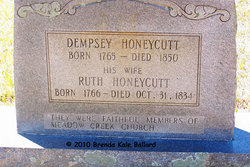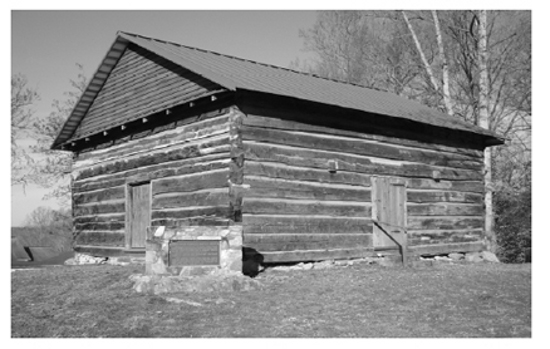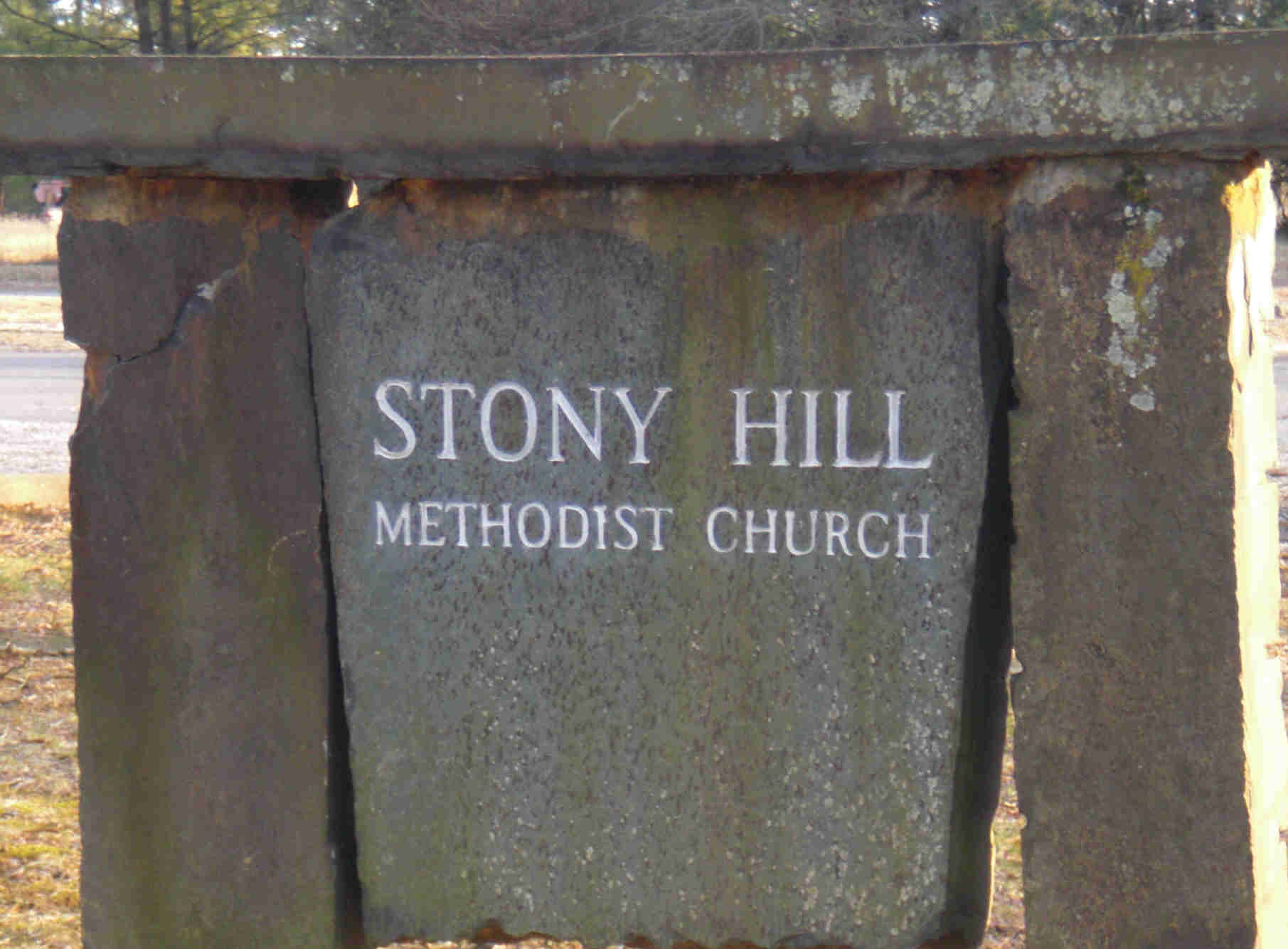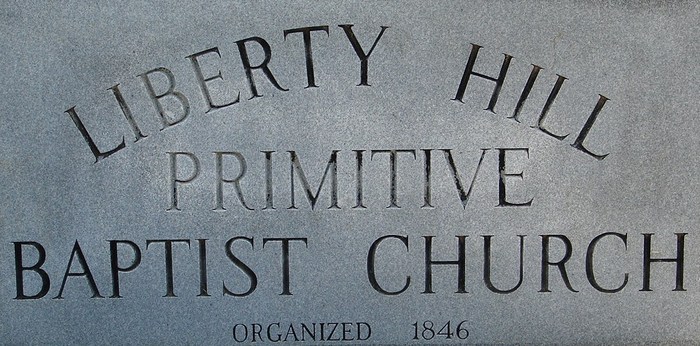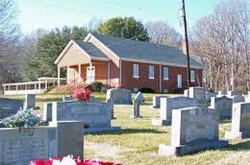To some people, the old 19th century script and tree-killing legalese of old land records are hard to read and not relevant to their families' story. I find this quite the contrary. While learning to read ancient handwriting can prove to be a struggle, learnig that "f's" were often "s's" and chains, walnut trees, branches, springs, corners and lines can sometimes be the only link from one family member to another. Did they live side by side and have the same neighbors? Did the property pass from one generation to another? Did they witness each other's deeds and sign each others bonds? I've found a wealth of knowledge in land transactions.
I've not found one single deed in the Montgomery County records, which covered the area that is now Stanly, with the name "Lambert" on it, but sometime, somehow, before Stanly County was born in 1841, Rev. John Lambert had acquired 66 acres in what became Stanly County, somehow and from someone. It could be that the deeds were lost in one of the Montgomery County Courthouse fires, or were just never ratified.
The Lamberts settled on both sides of the Furr Township and Almond Township border. By the time this map came out about 60 years later, they were so numerous the community was called "Lambert". Notice all of the Lamberts on the above map. Many of the Almonds and McLure's were also grandchildren of Rev. John Lambert as one of his daughters married an Almond and a granddaughter married a McLure.
This old map pinpoints the location of J. T. Coley's Store. A road still bears the name, "Coley's Store Road". Two Lambert family cemeteries, one holding the remains of Rev. John Lambert and his granddaughter, Lavina Almond McLure, probably his wife Phida, and around 30 other family members are centered around the intersection of Coley's Store Road and Ridgecrest Road. This was more than likely the location of the old homestead of Rev. John.
The oldest Lambert deed in the Stanly County records, dated 1839, two years before Stanly was Stanly, proves there were Lambert land transactions in "Montgomery", but what happened to them, I don't know. It was between Frederick Lambert and his brother Nathan. November 13th, 1839 Frederick Lambert of Montgomery County sold to Nathan Lambert of the same, for $110, property on Big Running Creek that intersected John Lambert's corner and ran with Martin Widenhouse's line. It was proved by John Lambert, Jr. in 1854
Frederick was on the move. He had showed up in Montgomery in the 1830 census, and had showed up in court records of Cabarrus in 1825 when they sent the sheriff to Montgomery County to fetch him, but the sheriff failed and was fined. He would show up in the records of Tishomingo County, Mississippi by 1842, when he was elected Treasurer of the County and applied for a license, along with a William Rushing, to open a tavern. It seems in those few years, 1839 to 1842, he had made that long journey, by horse and buggy and had well established himself in the community. Worth noting is that in 1844, his father, Rev. John Lambert, would build the Liberty Hill Church in conjunction with another William Rushing.
| Mississippi war destruction |
Frederick filed several denied claims with the U. S. Southern Claims Commission. This was an agency set up to reimburse Union sympathizers who had lived in the Southern States during the Civil War for damages and losses they had suffered during the war. Frederick made several interesting statements in his depostitions. One that caught my eye involved the time he was still in North Carolina.
"In nullification times I lived on the border of South Carolina. It was publically declared that the man who dared to vote for Jackson should be flogged. Before 100 men I showed my ticket and cast my vote for Jackson. A few others followed me. If you want to know, I'm not afraid of 1000 men, I'm afraid of doing wrong".
The nullificaton period he spoke of occured during 1832-1833, during the Jackson Administration. South Carolina had declared that the Federal Tariffs of 1828 and 1832 were unconstitutional and therefore null and void in their state. This period began the doctrine of the assertion of states rights that would lead eventually to other acts and decrees that eventually led to war.
Frederick was in Stanly County, North Carolina at this time and the election he spoke of was probably the one of 1828. It's worth noting that John Lambert, nor any of his sons, ever owned slaves. A few of his grandsons did serve in the Confederate Army, whether by choice or by force, is a different matter that I will explore later. Frederick was a devout Republican and I am led to believe his father and brothers were as well. There were John Lamberts in Randolph and Chatham who owned large properties and many slaves. They were not our John. He was a Circuit riding minister who remained poor as a church mouse. He stored up his riches in heaven. Frederick, however, became a businessman and farmer and did well for himself. He suffered the loss of $5000 cash and many horses and other livestock during the War, for use of the Union Army.
 |
| The above section of map shows the location of Pole Bridge Creek and Running Creek |
In 1844, George Washington Lambert was the one on the move. In 1841, he had been taxed for 105 acres. On March 1st, 1844, he sold to his brother Nathan, both of Stanly County, for $50.00, 154 acres
"on the head waters of Big Running Creek".
T. A. White and Susan White were witnesses. On the same day, March 1st, 1844, for $25, he sold to John Lambert (probably his brother John, not his father John), 87 acres on the headwaters of Big Running Creek.
George W. Lambert relocated to Iredell County, NC. He married Jane "Jennie" Page, a sister to John Calvin Page who married his sister Piety. He probably relocated with Burwell Pliler (Plyler), who was his neighbor in 1860. George and Jane had a large family, but did not profit much. They farmed, but did not own any land. He may have faired better to have stayed in Stanly County. There were already a few Lamberts there before he arrived and several descendants have tried to tack him to them, even suggesting he was one of them, but had changed his name. Fortunately, two of their sons who lived long enough to have death certificates, have them as being born in Stanly County on them, and dna has verified this is our George. Some current descendants go by Lamberth instead of Lambert.
Martin Widenhouse was a wealthy landowner in southeast Cabarrus County. His father, of the same name, was born in Germany. The following land transaction most likely involved Martin Jr. as I believe Martin Sr. died in the 1840's. The Widenhouse family settled thickly around the Midland and Georgetown areas of Cabarrus.
1850 Martin Widenhouse of Cabarrus County to John Lambert of Stanly County for $90, 120 acres on Pole Bridge Creek. It adjoined John Lambert "and others". There was one exclusion, Martin kept claim on "one half of the gold and silver mines". Nathan Lambert was a witness. The property was fairly close to Reed's Gold mine.
Also in 1850, Jonathan Lambert sold to William Lambert for $5.00 104 acres that bordered a line William Lambert owned already, on the "waters of Stony Run".
| Stony Run Creek |
This William Lambert was the son of John Jr., and was also known as "Buck" Lambert. He was my direct ancestor. He was born in 1824 and married Talitha Herrin, a daughter of Hezekiah Herrin, who was mentioned in the dockets of Bear Creek Church and who was the patiarch of the Herrin family and community for which the Herrin School, shown on these map snippets, was named for. His uncle William, the oldest son of Rev. John was living in Cumberland County at this time.
Jonathan was but a few years older than Buck. There's been speculation on whether he was a son of Rev. John Lambert or John Jr. These old 19th century farm families began having children from marriage to when the mothers were in their 40's. Many children did not make it to adulthood due to plagues and diseases, ailments that are treatable now, fires and accidents, even wild animals. There were bear and buffalo in this area when the first settlers arrived, hence the names "Bear Creek" and "Buffalo Creek". I've read numerous sad old stories about toddlers falling off horses, or little girls catching their skirts on fire by playing too close to the hearth, or even babies placed on pallets while the mothers tended garden nearby, being taken by hawks or other predators such as wolves or wildcats, not to mention the bouts of thyphoid, TB or influenza that would wipe out half the family.
Phida would have been 21 upon the birth of Rebecca in 1795 and well into her 40's by the birth of Jonathan, but I'm siding with the theory of Jonathan being Rev. John and Piety's due to 2 factors. One, he was living with them in 1850, and two, John Jr. outlived Jonathan and left a will. In the will, he mentions his orphaned grandchildren, but not the children of Jonathan.
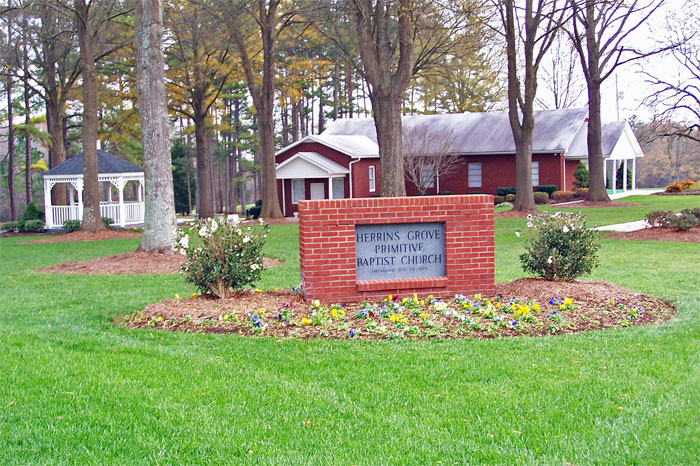
In Book 3 Page 91 Hezekiah Herrin sells to Talitha Lambert (his daughter), for $100, 164 acres on the waters of Stony Run and Jordan's Branch, " on the south side of the old road near Lambert's line".
WB Herrin and Green D. Whitley were witnesses.
In Book 3 Page 362, in 1851, Robert Motley and others to Nathan Lambert, a very interesting deed is found. This would be the younger Nathan, son of John Jr., as the older Nathan, son of Rev. John, had migrated to Marion County, Illinois by then. The 1839 deed would have been Nathan the 1st, son of Rev. John, as Nathan the younger would have been too young at the time. Robert, Ransom and Thomas Motley (Jr.) by their agent "N. Barringer", of Cabarrus County, sold 5 tracts of 100 acres that had been sold by Anthony Williams to Thomas Motley, Sr. on the north side of the Public Road. "30 acres one part sold to John Lambert Sr. for metes and bounds of the original tract reference made to the deed from Hellums to Motley and other tract on waters of Running Creek, John Lamberts corner, then with his own and Thomas Motley's sons line and Hellums old line of 12 acres".
It was signed by Ransom, Robert and Thomas Motley via their attorney. G. A. Whitley was a witness. As a note, the name "Hellum" was the original form of Helms, a large family centered in the Union County, Monroe area. There are plenty of Helms in Stanly County. I descend from a Tillman Helms who married Mary Elizabeth Preslar or Presley. They were some of my 5th Great Grandparents. Her Grandfather, Andreas (or Andrew) Preslar immigrated from Rheinland-Pfalz, Germany, via New York and Massachusetts and settled on the Rocky River in what was then Anson County. The name stayed Preslar in some lines and was "countrified" to Presley in others, just as Hellums became Helms and in some lines who migrated west, remained Hellums. You may can guess that Andreas Preslar left one very famous descendant among members of the family who migrated from right here on the banks of the Rocky River, to Tennesee. Yes, it was with great pleasure, that before her death, I was able to inform my mother, thanks to Ancestry.com, that she was indeed, a 10th cousin to her idol, the infamous Elvis Presley, the king of Rock and Roll.

| Elvis Presley as a child. |
These cycle of deeds continues when on July 27, 1851, William Lambert sells to John Lambert, for $50, 154 acres on Big Running Creek, near the forks with Little Running Creek. It was signed by William and witnessed by William Stancell and Nathan Lambert. Was this the same 154 acres sold by George Washington Lambert to Nathan Lambert I in 1844?
This was found in Book 3, Page 372. The very next page, 373 contained the following deed: March 1, 1852, Nathan Lambert to John Lambert for $13, a 19 and a half acres tract on Running Creek bordering the Salisbury Road. It was witnessed by William Lambert and J. H. Herrin.
Also in 1852 was a deed concerning the Motley heirs and the Lambert family again.
September 7th, 1852, Thomas Motley to William Lambert Book 16 Page 23
Ransom, Thomas and Robert Motley by their Agent, Attorney Barringer, of Cabarrus County, sold to "Will J Lambert" of Stanly County for $160, a tract of land referred to as "the old Drury Place" and "Motley's old field". It contained 310 acres and included a tract of 78 acres "hereforto claimed by Ransom Motley" , but "not to include 12 acres claimed by John Lambert (Sr.) and for which he has a deed from Thomas Motley." The tract was located on Running Creek "adjoining John Lambert and the Ruben Almond tract. It was signed by "Agent Rufus Barringer" and witnessed by Henry Plott and Henry Hinson.
The very next page, Book 16 Page 24 was a sale of this same tract, also in 1852, from William Lambert to John Lambert, described to lie on Running Creek and the Fayetteville Road (which later became known as Route 24/27). This deed was ratified on December 3, 1885 certified by a codicil by Thomas Lambert, Justice of the Peace and the witness signatures of John L and William Lambert.
This, and many of the following Lambert family deeds caught my attention for that one issue, the ratification of Thomas Lambert, Justice of the Peace.
Now a little bit about Thomas Lambert. Thomas was what I call a Ribbon. He kind of ties the whole family together. Many family trees have Thomas as a son of Rev. John and Phida, and given, he was basically the same age as Jonathan, but he was a grandson, not a son.
I will go into more detail on Thomas later, but briefly, he was born on July 31, 1820 in Johnston County, NC. He married to Nancy Partin in 1842 in Wake County, NC which borders Johnston County and shows up with her in the 1850 census, in Johnston County, their first two children, Julia and James, and a 28 year old William Lambert. Thomas was a merchant and William was a clerk. I've found newspapers articles on merchandise arriving in Wilmington and Fayetteville, up the Cape Fear, for the store they obviously ran together.

The Lamberts lived in the Pleasant Grove township, which was in the pointy western corner of Johnston County and bordered Wake and Harnett, explaining why some of their marriages took place in Wake County. By 1860, Thomas was living in Wilkes County, beside a William Anderson, who may have had something to do with him naming a son Anderson. In the meantime, his younger brother, William Henry had married Millie Ann Watkins and was a Teacher in Johnston County and started his own family. The Lambert sons were well educated. Willliam Henry was also a Justice of the Peace in Johnston County.
Their father, William Lambert, was the first son and second child of Rev. John Lambert. He first shows up on a tax list in Johnston County with John, marries Louisa Young, daugher of a Thomas Young, in Wake County in 1819, shows up in Wake County in the 1830 census, in Cumberland County in 1840 and 1850, and then by 1860, he's back in Johnston County with his second family, after marrying Charlotte in Cumberland. In 1870 and 1880, he's alone and living in the household of his son William Henry. He had 4 sons by Nancy and a son and daughter by Charlotte. His youngest son was called Needham. There seems to me to be a close connection to the Needham Whitley family which started in Johnston County and moved to Stanly County also.
Before 1870, Thomas Lambert joined his Aunts, Uncles and Cousins in Stanly County. And he blew in with a vengence. He appears to have evaded the War, no record of his serving. As a Justice of the Peace, it appears he gathered up all of the Lambert family land deeds, had them ratified in 1881 with the testimony of any living witnesses or relative witnesses of signatures. He was looking out for his family. He lived close to them, on land occupied by Lamberts for decades and was buried with many of them at Bear Creek when he died just a few years later at the age of 67.
 |
| Portion of map showing Liberty Hill, Pleasant Grove, 'Five Points, Red Cross and the town of Big Lick. |
Daniel Freeman was a merchant in the County Seat of Lawrenceville, before the division of Montgomery County. After, he moved his store to the fledgling town of Albemarle in the newly minted County of Stanly, that had previously been known as "Smith's Store". Located at the junction of Little Long Creek and Town Creek with Big Long Creek upon the rolling hills of the Hearne Plantation. 50 acres had been cut off of the plantation for the town, and citizens all over the county came to the little spot on the hill to do trading and take care of court business. Several got in debt with Mr. Freeman, whom I believe to have been a nephew of my ancestor, Charlotte Freeman Winfield. The Lamberts were no exception.
November 9, 1856 Book 6 Page 528 John Lambert took out an indenture on his property for $150 for debt to Daniel Freeman.
November 20th 1856 Book 6 Page 531, his son William Lambert did the same for $175 a tract that bordered Nathan Lambert's line, Tucker's corner, Jonathan Lambert's corner, William Lambert's line and Tucker's line.
Book 14 Page 526 Jonathan Lambert sold to Nathan Lambert for $50 50 acres along the Concord Road where Running Creek crosses the road at the mouth of Spring Branch along William Lambert's line "in the presence of John Lambert" in Superior Court.
Thomas Lambert, Justice of the Peace, ratified this deed on 14 December 1885 with William Lambert verifying the signature of John Lambert.
In 1869, William Harrison Huneycutt and wife Tabitha sold to Thomas Lambert 78 acres on Little Bear Creek for $250 adjoining Isaac Bailey and Susan Perry and a second tract at the head of Muscle Springs near "Dunn's old line".
Then just a little later in Book 7 Page 131 Thomas bought another tract of land on Little Bear Creek from Levi H. Mason and wife Mary A. Mason bordering Reading (Reddin) Almond.
By the 1870's, the next generation was getting involved. In 1873, John L Lambert bought land on Stony Run Creek from William H. Carter adjoining Jonathan Lambert, witnessed by C. W (Caleb Wiley) Lambert and N R Lambert
Book 9 Page 599 Thomas Lambert recieved a grant in 1875 for 12 1/2 cents an acre to the Treasurer for a 5 1/2 acre tract "where Howell Burleyson's line crosses said Lamberts".
In 1876 William "Buck" Lambert sold 82 1/2 acres to Anderson and Thomas Lambert Jr., sons of his cousin Thomas, that bordered Ransom Almond and John Almond.
Another notable deed was that between Ervin and Ellen Almond to William "Buck" Lambert. Ervin Lambert was the son of Pleasant Almond by his mistress, Barbara, born while he was still married to Rev. John Lambert's oldest daughter, Rebecca. Ervin married Buck Lambert's sister, Piety and had several children before she passed away. Then he married Ellen, who had lived in several different counties before she married. Her family migrated to Lafayette County, Mississippi, as did Ervin and Piety's two older children in adulthood. This deed shows that Ervin also moved to Mississippi, but returned to Stanly County and is buried in the Lambert cemetery. Ellen might have divorced him, as she remained in Missisippi and remarried. The deed lists them as "Ervin and Ellen Almond of Abbeville, Lafayette County,MS to William Lambert of Stanly County, NC.
 |
| Map showing location of Bear Creek Primitive Baptist Church |
On April 1862, Andrew Huneycutt, administer of Jonathan Lambert, sold to William J. Lambert, son of Jonathan, his father's land on the Concord Road, Witnessed by Eli M. Herrin, William Lambert (probably Buck) and ratified by Thomas Lambert, JP in December of 1885. Book 16 Page 140
Just two pages later, in Book 16 Page 142 there was another deed that sort of proves a point of mine. It's between John Lambert (Jr.) and his son John Quincy Lambert, for land on Big Running Creek. It was witnessed by Caleb Wiley Lambert and his father, William "Buck" Lambert. It was ratified by Thomas Lambert, JP by oath of CW Lambert. Two points here: One, John Quincy Lambert was John Quincy alone. John Jr was never seen as John Quincy. I see many trees with him having this middle name or either that of William. I've never seen Reverend John with a middle name, nor John Jr. The other point was that of Thomas ratifying all of the family deeds.
The Lambert deeds get thick and varied among the Grandsons, Great Grandsons and Great Great Grandchildren of Rev. John Lambert of Liberty Hill. Despite being poor as a church mouse and getting behind on his taxes, the old Primitive Baptist Minister left a legacy, and more than a few secrets.









